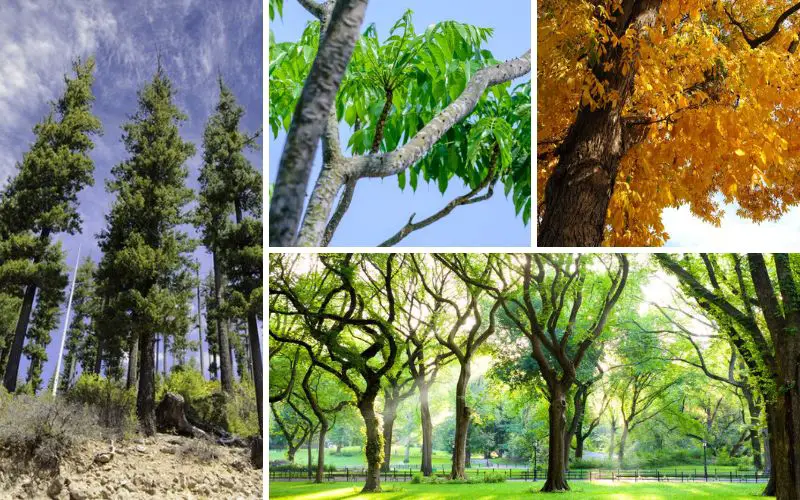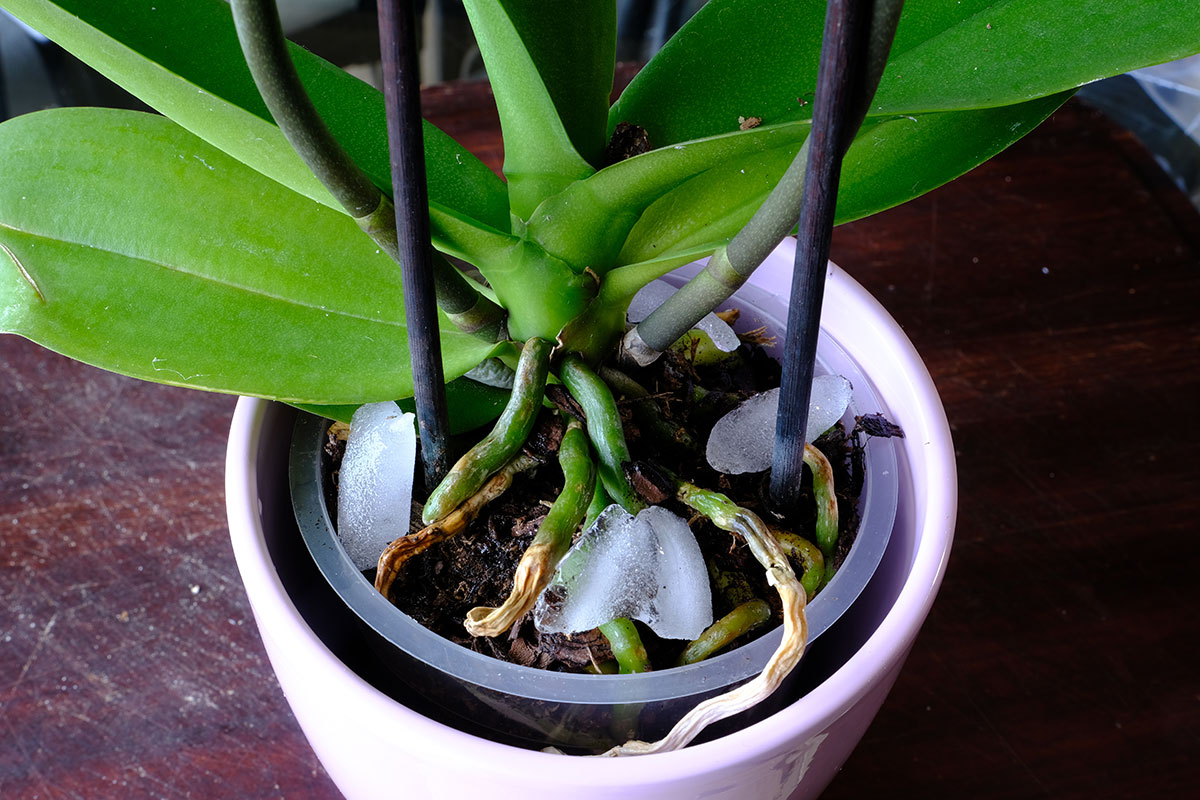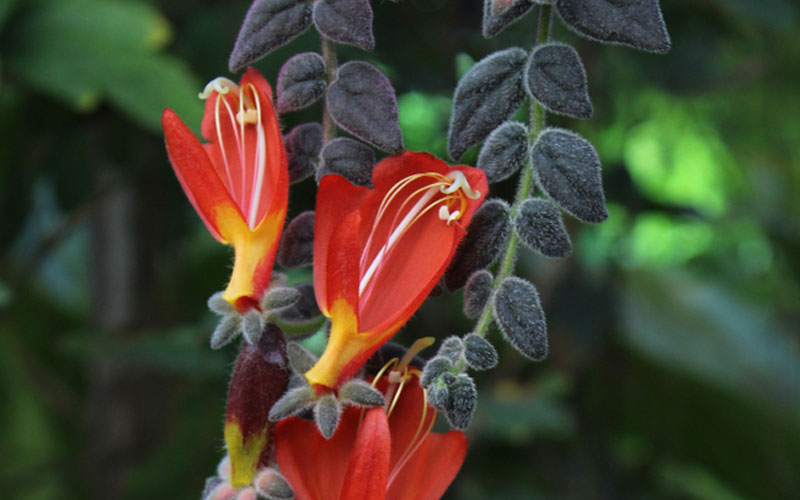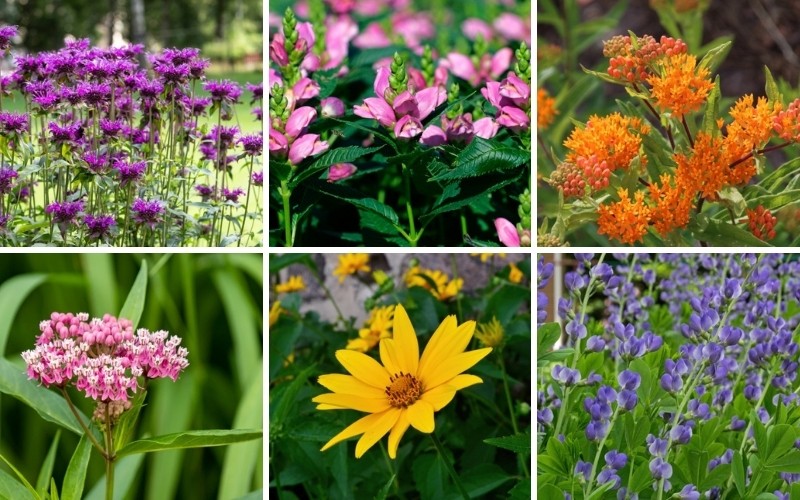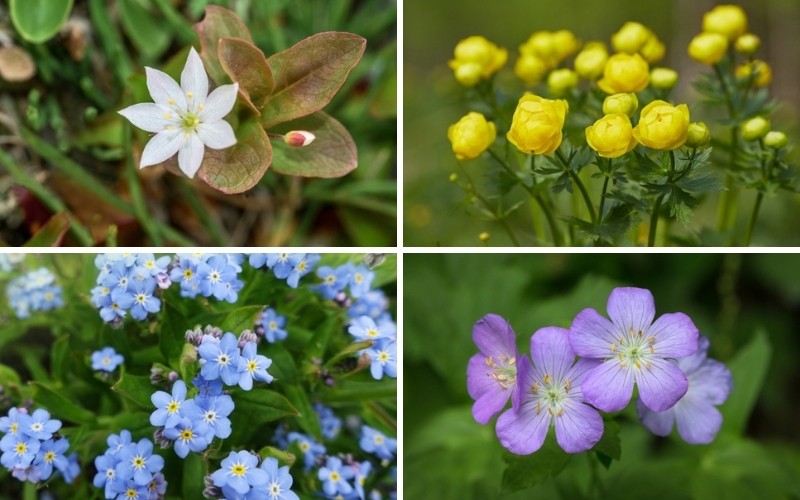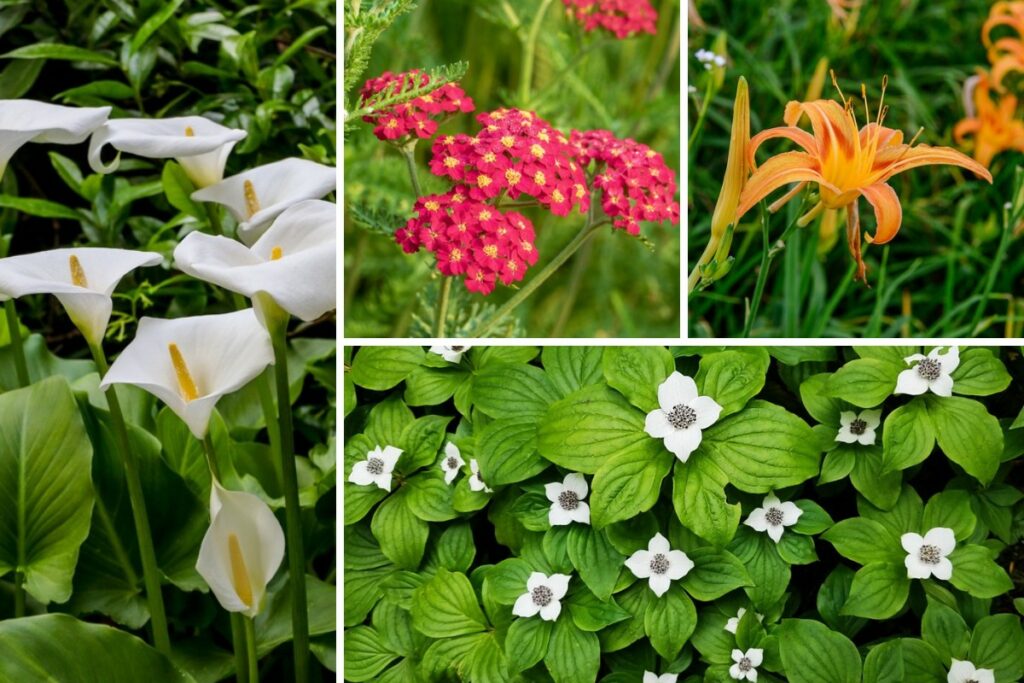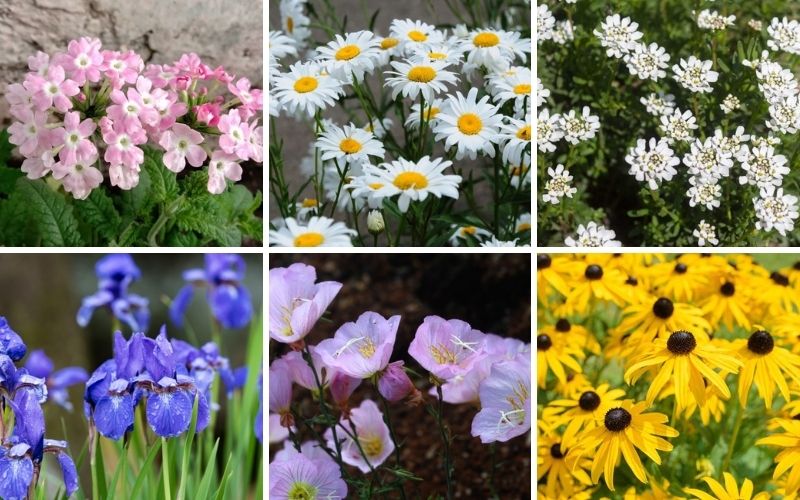
Depending on where you live in Tennessee, you may be in growing zones 5 through 8. Furthermore, selected plants should meet the conditions in the spot where you want to plant them. For example, some plants do great in sunny locations while others love the shade.
You also need to be honest with yourself about how dedicated you are to taking care of your plant because some perennials require a moderate amount of care while others require almost no maintenance to look great.
If you live in Tennessee, consider these 15 perennials.
Rose Verbena (Glandularia canadensis)
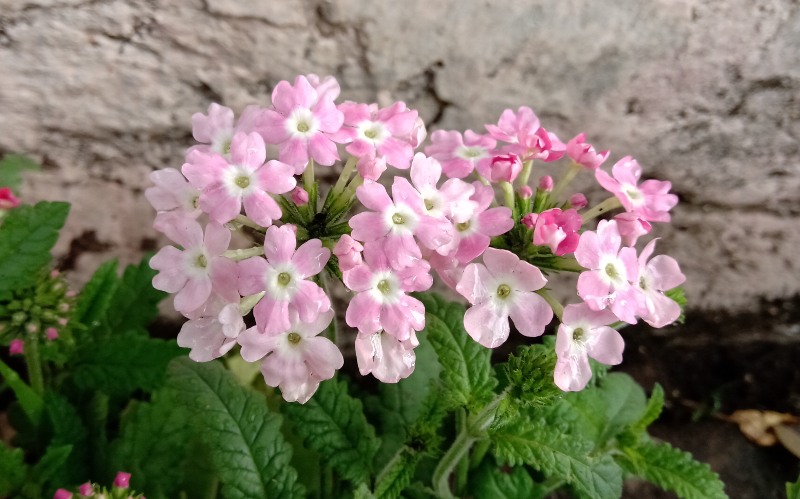
Rose verbena is a clump-forming plant that self-seeds and can spread quickly. This plant loves the sun and well-drained soils, and it is drought tolerant. This plant can grow up to 18 inches tall forms a new plant where the leaf nodes touch the ground. This plant puts on flat-top clusters of rose-colored flowers with five petals in the late spring that usually last throughout the summer. When not in bloom, its dark green leaves that are deeply lobed keep it an attractive option.
Northern Sea Oats (Chasmanthium latifolium)
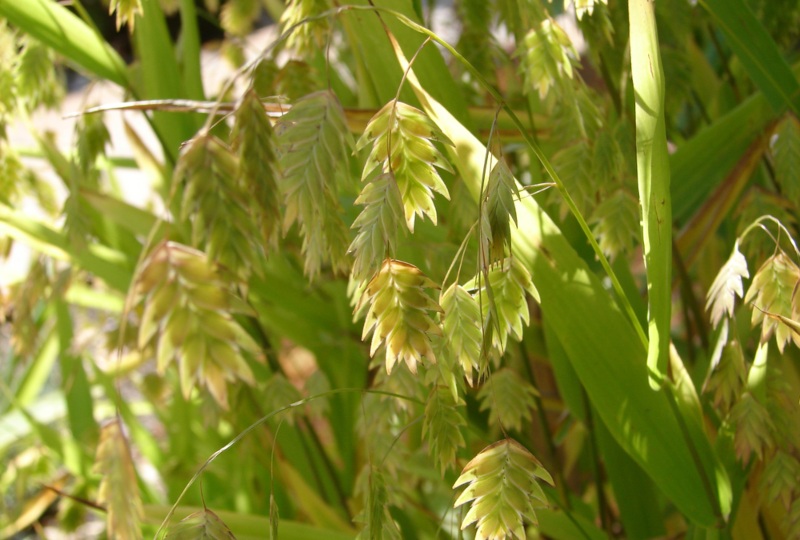
Northern sea oats is a perennial ornamental grass that grows equally well in the sun or the shade. This clump-forming plant produces spikelets at its top that resemble the heads found on wheat plants. The seed heads start green in the summer and turn to a rusty brown in the fall often hang on for most of the winter. If you do not want this plant to self-seed, then you need to cut off the seed heads in the fall.
Oxeye Sunflower (Heliopsis helianthoides)
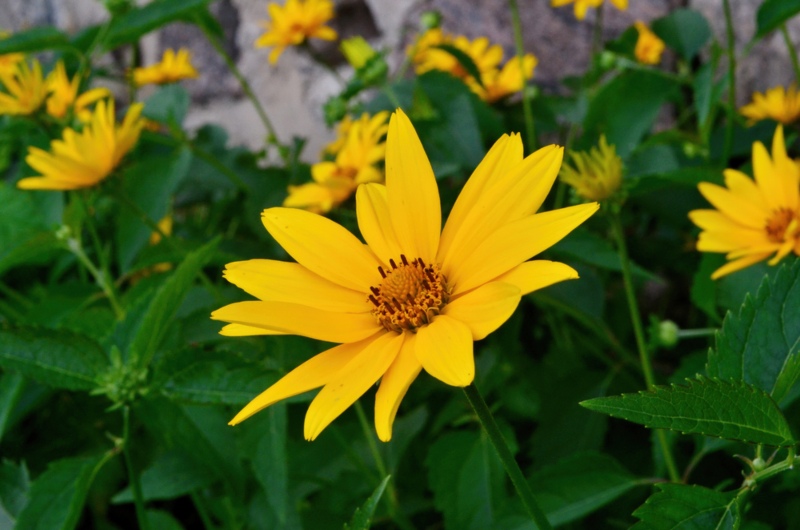
If you have a sunny spot that drains well, consider planting the oxeye sunflower there. This plant typically grows between 3-and-5-feet tall, but if you want to keep it shorter, cut it back by about 50% in the spring. This plant produces daisy-like flowers in the early summer. Its rays are bright yellow, and they surround a brownish-yellow center cone. Ovate dark green leaves up to 6-inches long appear on this option.
Butterfly Weed(Asclepias tuberosa)
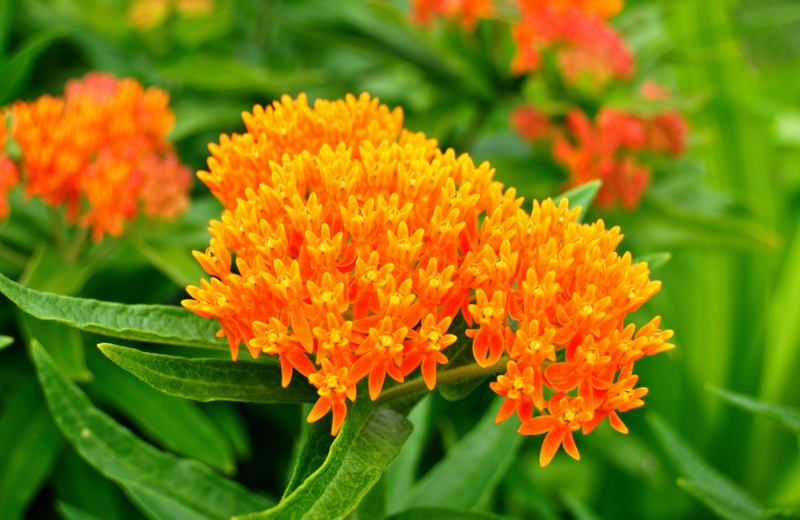
The butterfly weed may be the perfect flower for a sunny spot where the soil is poor. This clump-forming plant that grows up to 3 feet tall produces clusters of yellow-orange flowers on upright hairy stems in the summer. Once the flowers fade in late summer, spindle-top seedpods appear. These seedpods will eventually split open disperse their seeds, so if you do not want this plant to spread, be sure to pick them off in the late fall.
Shasta Daisies (Leucanthemum × superbum ‘Becky’)
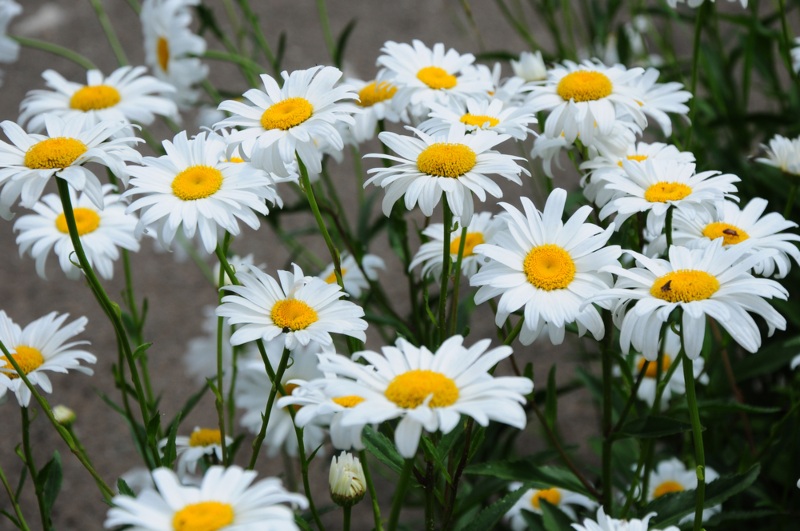
Shasta daisies are sun lovers who usually grow between 3-and-4-feet tall. White petals surround a yellow center disc on this option that prefers drier conditions. The flowers that are often up to 4-inches across appear in mid-summer and last until early fall. The lance-shaped, coarsely toothed leaves are medium green. Removing spent flowerheads helps to promote new bloom. Divide this option every two-to-three years to keep it healthy.
Tickseed (Coreopsis rosea ‘American Dream’)
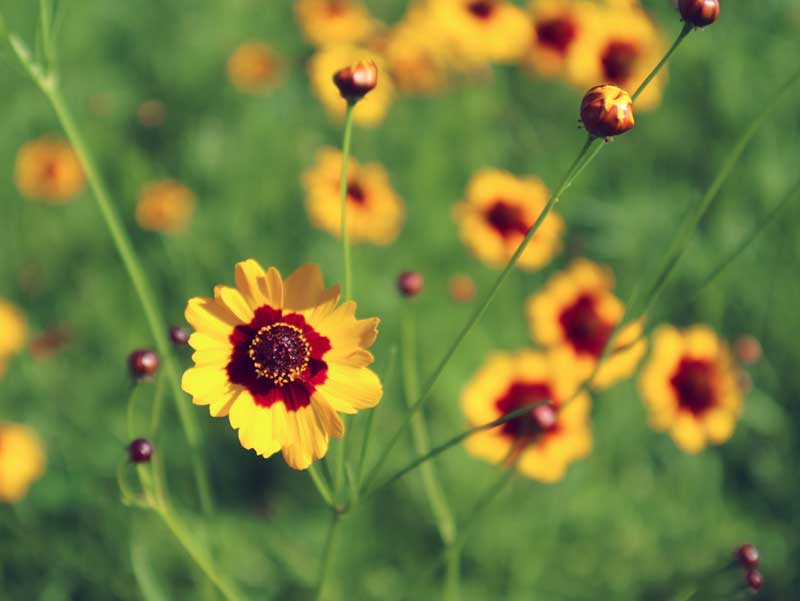
If you have a damp area in your landscaping, tickseed could be a tremendous perennial to plant in Tennessee, but do not choose this option if you have heavy soil. This plant puts on pink rays surrounding a yellow center disk. The flowerheads that are about 2-inches in diameter last throughout the summer. Choose a spot where you do not mind this plant spreading or deadhead it when the flowers fade.
Joe-Pye Weed (Eupatorium purpureum)
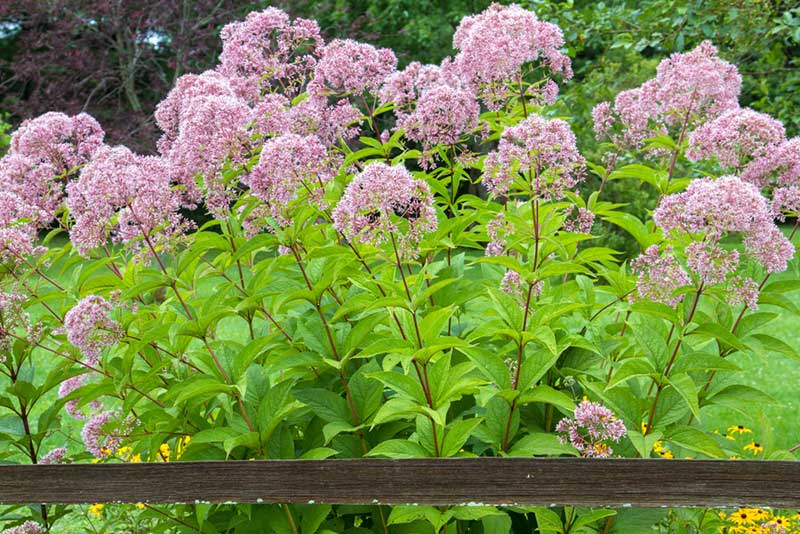
Joe-Pye weed is an excellent choice for sunny areas that gets a little shade. This option can grow up to 7 feet tall puts on mauve, vanilla-scented flowers in the summer. The flowers appear in florets, with five-to-seven bunches usually appearing on each plant. Adding to this plant’s visual interest, seedpods appear after the flowers fade that persists until about the winter holidays. The lance-shaped leaves on this option can be up to 2 feet long.
Candytuft (Iberis sempervirens)
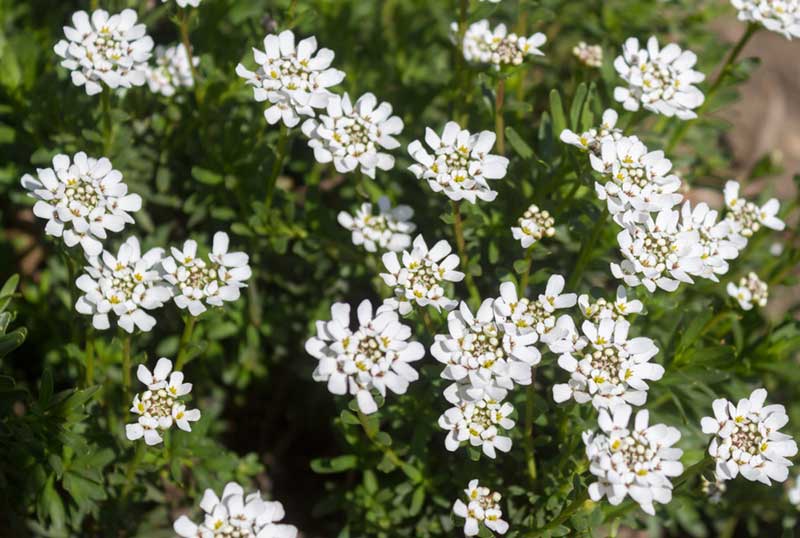
Candytuft loves the sun, but it hates to stay wet, so plant it in a well-drained area. It puts on dense clusters of white, four-petaled flowers in the spring. Depending on many different factors, the flowers may turn light pink before fading. The flowers on this option often become so dense that it can be challenging to see the foliage until the flowers fade in late spring. You will then adore the dark green, leathery leaves that can be evergreen in lower elevations of Southern Tennessee. Maintain this plant’s health by cutting it back by about 33% in the fall.
Japanese Water Iris (Iris ensata)
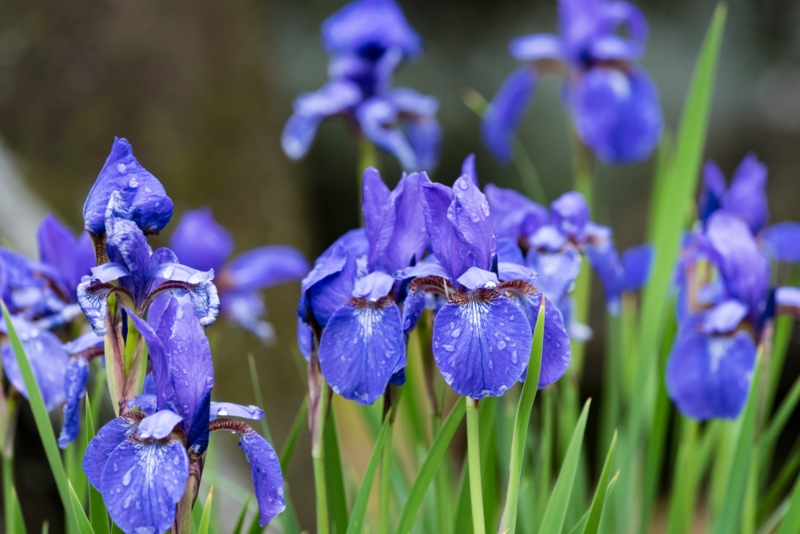
If you have an area of your landscaping that often has standing water up to 6 inches deep, then the Japanese water iris may be a great choice. This plant that will tolerate a little shade grows up to 48 inches tall. You can find options that bloom in various colors, including blue, lavender, pink and white all summer long. These flowers are eye-catching because of their flattened appearance. This option is also great for placing in a pot in a water feature and bring it inside in the fall.
Goldenrods (Solidago drummondii)
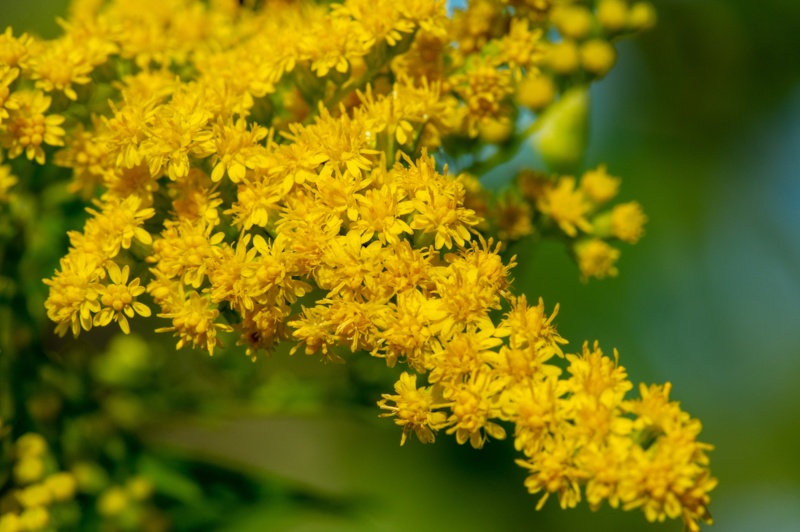
Multiple daisy-like, yellow flowers with five-to-seven rays appear in the late summer on this plant. This option that often grows to be about 30 inches tall has two types of leaves. Upper leaves are ovate and can be up to 3.5 inches long while basal leaves are much shorter and usually disappear entirely before this plant flowers. This clump-forming plant is one that you can put in the ground and forget because it will tolerate almost any conditions except full shade.
White Evening Primrose (Oenothera speciosa)
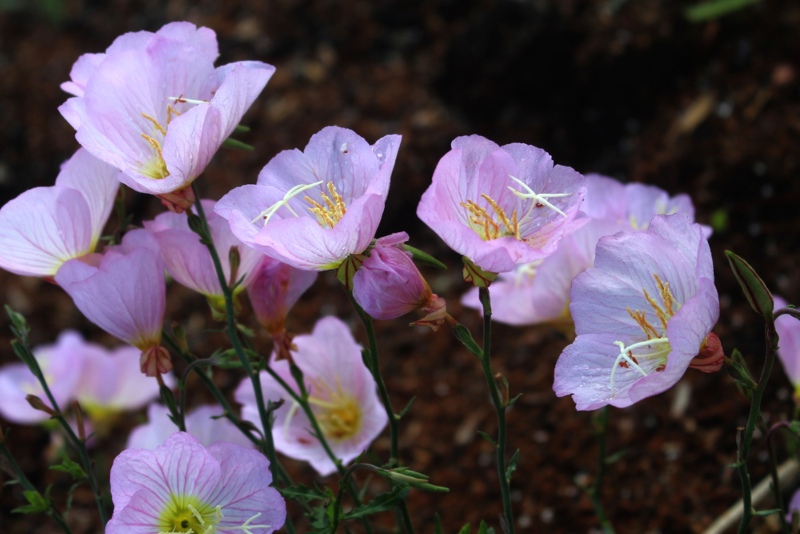
The white evening primrose loves the sun and hates to be wet. Its cup-shaped flowers with four petals appear in the late spring. As summer days get longer, these flowers will turn a pink color. These flowers open as the sun goes down and close back up on sunny days in the morning. After the flowers fade in midsummer, this plant puts on seed pods that can be up to 2 inches long.
Stokes’ Aster (Stokesia laevis)
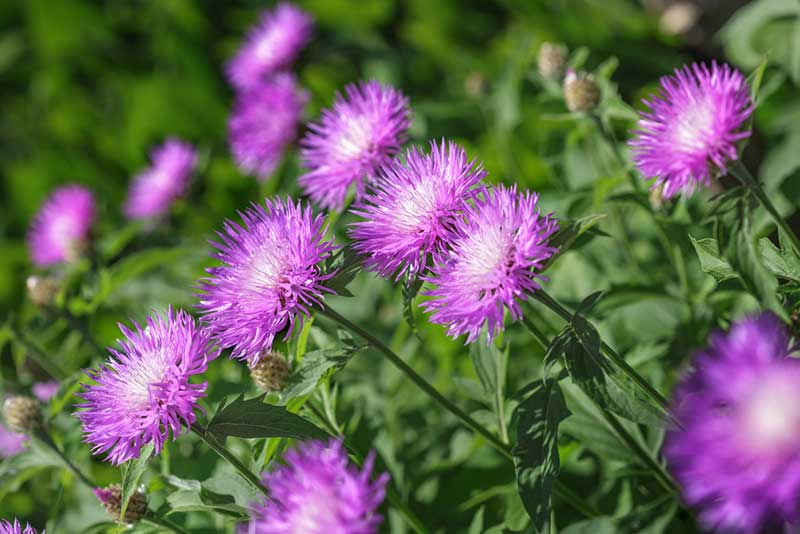
Stokes’ aster needs moist, but not wet, soil throughout the year. This plant will die if it sits in soggy ground, especially in the winter. This evergreen perennial typically grows to be about 24 inches tall. It puts on violet-blue coneflower-like blooms in the late spring that last throughout the summer. Each flower generally is about 2.5 inches across. Keep this aster blooming until early fall by deadheading it and removing spent stems.
Purple Passionflower (Passiflora incarnata)
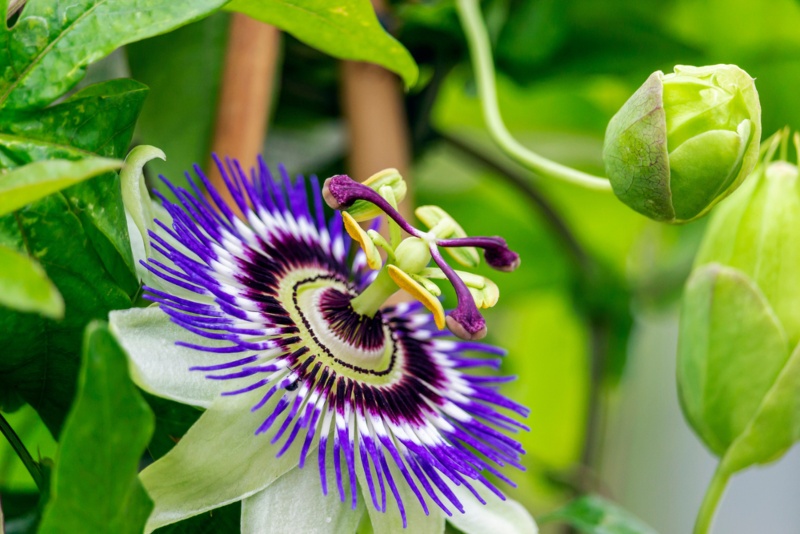
When most plants are beginning to fade in the late summer, the purple passionflower puts on purple fringed flowers with white petals and sepals. In mid-summer, this plant also produces edible fruit that you can into jelly. This vine typically grows to be about 7 feet tall. It spreads by root suckers. This plant loves the sun. Plant this option in areas where it gets some protection from cold winter winds.
Garden Sage (Salvia officinalis)
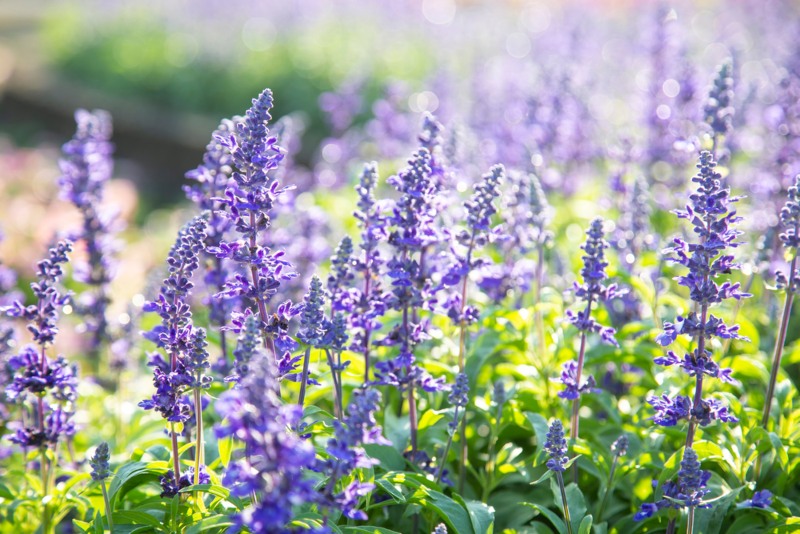
Plant garden sage in well-drained soil in full sun because extra moisture can be fatal, and lack of sunlight can make it bolt. Two-lipped, lavender-blue flowers appear on short flower spikes in the early summer. The gray-green leaves on this woody plant can be collected and used in your kitchen. This option smells great, so consider planting it near your outdoor living space so that you can enjoy its fragrance.
Black-eyed Susan (Rudbeckia hirta)
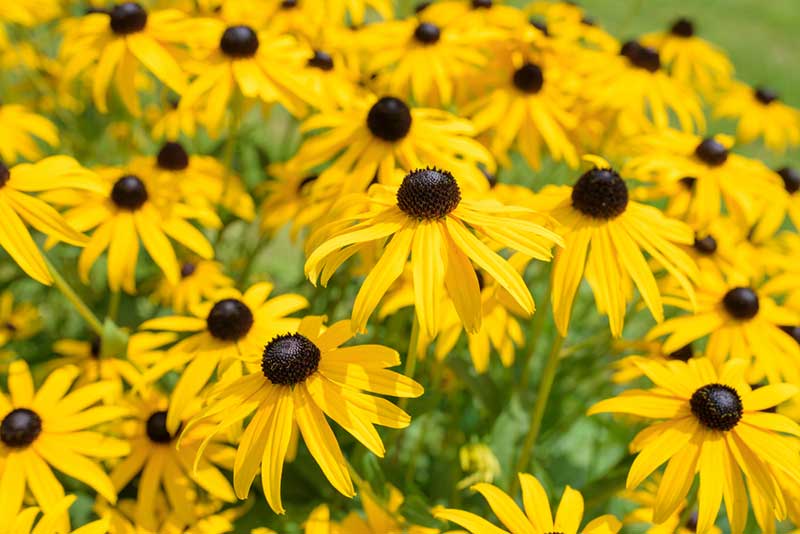
Black-eyed Susan is a woody plant that produces bright yellow rays surrounding chocolate-brown center disc flowers throughout the summer. Each flower can be up to 3 inches across. Fine hairs cover the lance-shaped leaves that are often up to 7 inches long. While it would prefer a sunny location, it is not overly picky.

